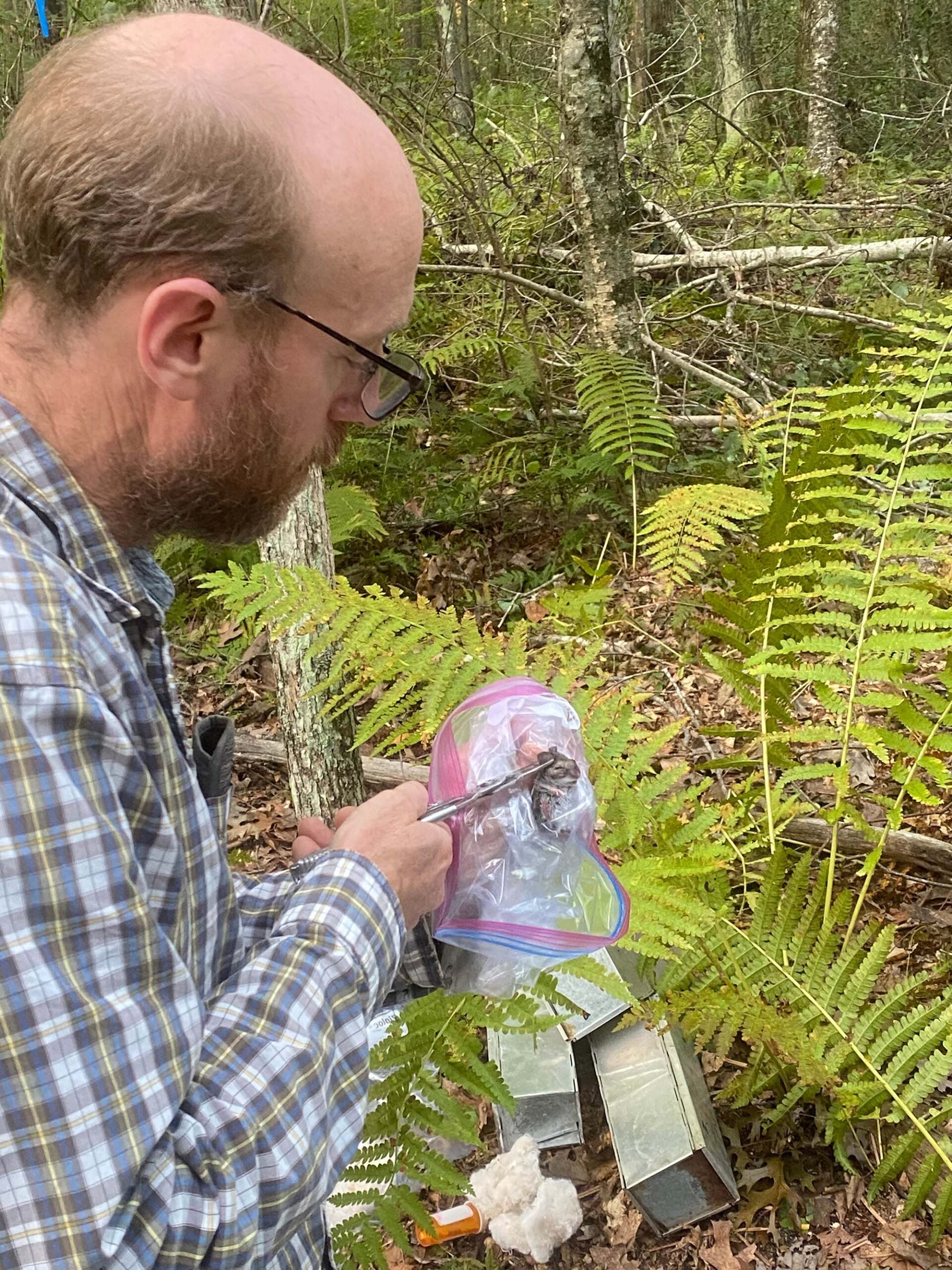KINGSTON, R.I. – December 13, 2021 – A wildlife biologist at the University of Rhode Island has observed a significant growth in the local population of white-footed mice this year, which could increase Lyme disease risk next year while also providing additional food to area predators and increasing the likelihood that homeowners find mice in their basements.
Christian Floyd, a URI teaching professor who studies rodents and other small mammals, said that his mammalogy class set 50 box traps in a forest to the north of the Kingston campus this fall, and in one night they captured and released 24 white-footed mice. They typically capture no more than 6. The students also captured many more images of white-footed mice on trail cameras than usual.
“Even in down years, this mouse is the most abundant mammal in Rhode Island,” said Floyd. “They’re everywhere – in fields, forests, farms, homes, everywhere.”
According to Floyd, mice typically live short lives because they are the primary prey for many common predators. But because females can reproduce just 30 days after being born, and they can produce 3 to 4 broods of 4 to 8 babies per year, their populations can grow rapidly if the conditions are right.
“A white-footed mouse outbreak is all about survival,” he said. “They have a high rate of being predated, but they seem to have survived better this year for some reason. The predator populations don’t really change, but what does change is their winter survival rates. The last couple winters haven’t been very severe, and that’s one important factor.”
Floyd said that the abundance of acorns in the last two years has also provided plenty of food to carry the mice through the winter months.
“Acorns are a major food source. They’ll eat seeds and other parts of plants, but it’s mostly acorns, and acorns were abundant this year and last year,” Floyd said. “That influences the size of their food cache for the winter.”
The combination of high food availability, mild winters and their typically high reproductive rate has led to a banner year for mice.
“What that means is a higher risk for Lyme disease and babesiosis,” he said. “Both are transmitted by black-legged ticks, but mice are the primary reservoir for the bacteria that cause those diseases. Mice transmit Lyme and babesia to the ticks.”
Floyd said that homeowners should also expect a greater number of mice than usual in their basements and garages this year.
“Since the weather turned cool, I’ve been catching about one mouse a day in my basement,” he said. “I’m up to 25 already. And that’s a problem, because they chew the wiring, they make a nest out of the insulation, and they get inside vehicles.”
An abundant mouse population isn’t all bad news, however. Just as the abundance of acorns probably contributed to the increase in the mouse population, the abundance of mice will likely give a boost to wildlife populations that feed on mice, like hawks, owls, foxes and weasels.
And by burying seeds and mushroom spores, mice also play an important role in supporting the regrowth of forests. So more mice could lead to healthier forests. But a lot will depend on the weather this winter.
“It’s already looking like we’re going to have another mild winter, and that’s a good sign for white-footed mice.” Floyd said.

